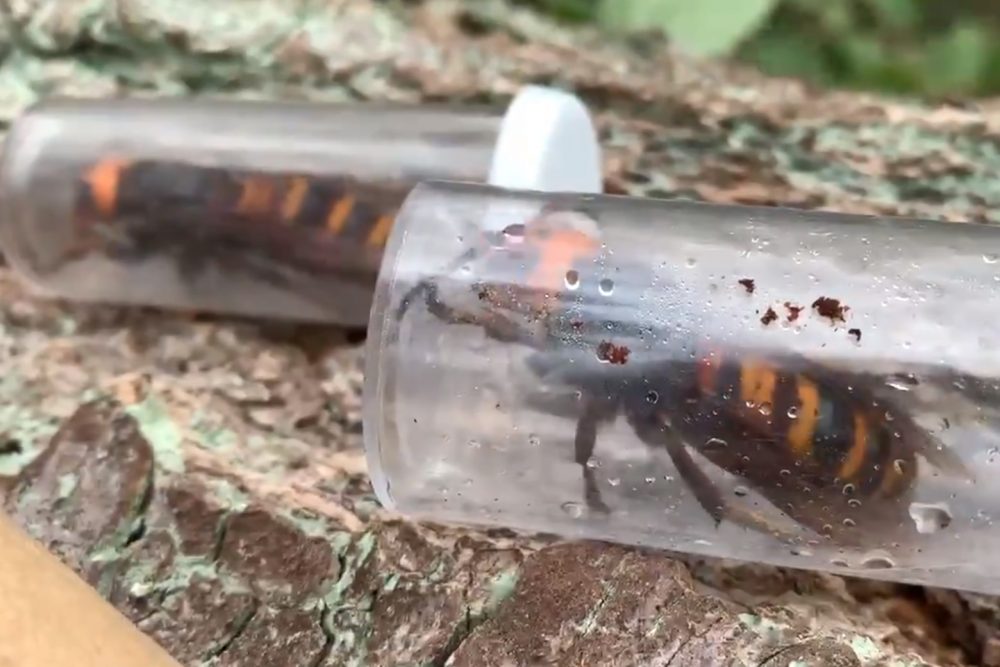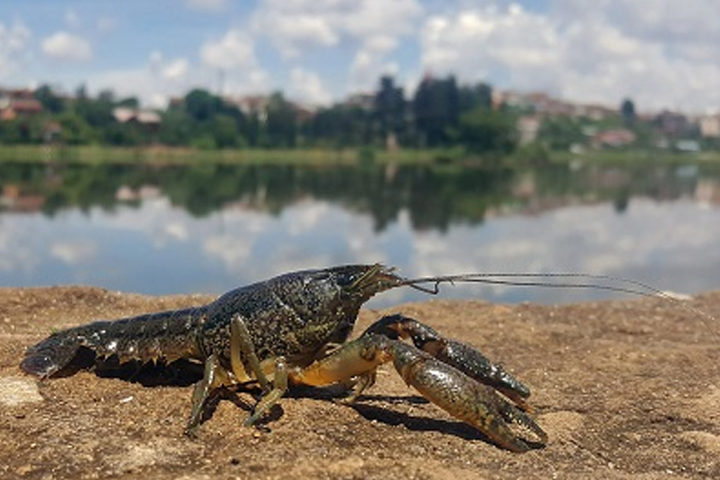Art by M. Fresner
Welcome back to the Lovecraft reread, in which two modern Mythos writers get girl cooties all over old Howard’s original stories.
Today we’re looking at “The Rats in the Walls,” written in August-September 1923, and first published in the March 1924 issue of Weird Tales. You can read it here.
Spoilers ahead.
“These rats, if not the creatures of a madness which I shared with the cats alone, must be burrowing and sliding in Roman walls I had thought to be of solid limestone blocks […] unless perhaps the action of water through more than seventeen centuries had eaten winding tunnels which rodent bodies had worn clear and ample. […] But even so, the spectral horror was no less; for if these were living vermin why did not Norrys hear their disgusting commotion?”
Summary: Delapore is last of his line, for his only son has died of injuries received during WWI. Grief-stricken, he devotes himself to restoring Exham Priory, his family’s former seat in England. It’s tumbled to ruin since the early 1600s, when Walter de la Poer killed father and siblings and fled to Virginia. Walter was more honored than despised for his actions—the cliff-perched priory was an object of fear long before it passed to the de la Poers.
Neighbors still hate Exham Priory, but antiquarians prize it for its peculiar architecture. A Druidic or pre-Druidic temple is its basis. The Romans built on top of that, followed by the Saxons and Normans. The original cult’s rites infiltrated the Romans’ Cybele worship and the Saxons’ early Christianity. A dubious monastic order planted oddly extensive gardens and terrified the populace. Previously of unsullied reputation, the de la Poers inherited the curse with their acquisition. Family members of a certain temperament, including those by marriage, appeared to form an inner cult; members of healthier inclinations tended to die young.
Delapore collects country tales of bat-winged devils holding Sabbath at the priory, of unsolved disappearances, of Lady Mary de la Poer killed by her husband and mother-in-law, with the blessings of their confessor. The most dramatic stories involve an army of rats that burst from Exham after Walter deserted it, devouring livestock and hapless humans before dispersing.
But Delapore’s a skeptic. He braves the antipathy of neighbors unhappy with his return and reclaims the “de la Poer” spelling; only his son’s war-time friend, Captain Edward Norrys, welcomes and assists him. Delapore lives with Norrys for two years while workmen restore the priory, medieval glory improved by cleverly camouflaged modern amenities. He moves in with seven servants, his beloved black cat whose unfortunate name starts with N (hereafter referred to as Cat With an Unfortunate Name or CWUN for short), and eight other felines he’s collected.
His study of family history is soon disrupted by the cats’ restlessness. A servant fears rodents, but there’ve been no rats in the priory for three hundred years, and mice have never strayed into the high walls. Nevertheless, Delapore begins to hear nightly scurrying in the walls of his tower bedroom, and CWUN is driven to frenzy trying to get at them. By their noise, the rats are heading downward, and the other cats congregate at the subcellar door, howling. Traps are sprung, but capture nothing. Only Delapore and the cats hear the rats, a fact which intrigues Norrys.
He and Delapore camp in the subcellar, where Roman inscriptions grace the walls. Several altar-like blocks date from the aboriginal temple. Delapore has a recurring dream in which he sees a twilit grotto and a swineherd driving fungous beasts of loathsome aspect. Norrys laughs when the dream wakes Delapore screaming, but he might sober if he knew whose features Delapore finally spied on one of the beasts.
Nor does Norrys hear the subsequent scurry of rats, cascading downward—as if the subcellar isn’t the priory’s lowest point. CWUN claws the central altar; when Norrys scrapes lichen from its base, a draught reveals some passage hidden beyond.
They debate leaving the mystery alone or braving whatever lurks below. A middle course seems wisest: Call in experts. They round up suitable authorities, including archaeologist Brinton and psychic Thornton. No scurrying rats disturb Delapore’s return; Thornton suggests they’ve already done their job leading Delapore to… something. Probably something delightful, we’re sure.
Brinton shifts the altar. The party descends into a grotto lit by rifts in the cliff-face. It extends into darkness, but they see enough: a sea of skeletons, more or less humanoid. Most are lower on the evolutionary scale than Piltdown man, and some are quadrupeds—the flabby beasts of Delapore’s dream! Structures dot the grottoscape, from prehistoric tumuli to an English building with seventeenth-century graffiti which appears to have been a butcher shop. The diet of the various cults is clear but doesn’t bear pondering.
CWUN stalks through these horrors unperturbed. Delapore wanders toward refuse pits in which rats must have feasted before hunger drove them to marauding frenzy. In the depths beyond, he hears rodent scurrying. He runs forward in an ecstasy of fear. The rats will lead him ever on, even to caverns where Nyarlathotep, mad and faceless, howls to the piping of amorphous flute-players!
Three hours later the investigators come on Delapore muttering in every tongue from modern English through Latin to primordial grunts. He’s crouched over Norrys’ half-eaten body, plump and flabby as that fungous beast that wore his features. CWUN tears at his master’s throat.
They destroy Exham Priory soon afterwards. Delapore, confined to an asylum, denies he ate Norrys. It must have been the rats, the demon rats that even now race behind his cell’s padding, the rats they can’t hear, the rats in the walls.
What’s Cyclopean: Delapore dreams of “fungous, flabby beasts.” Lovecraft uses so many words very exactly (including “cyclopean,” most of the time); inquiring minds would like to know exactly what he thinks “fungous” means.
The Degenerate Dutch: You’d think CWUN would be the main item here—it’s certainly the one that people tend to remember. But then there’s “the negroes howling and praying” at the arrival of the Union, clearly distraught at the disruption to their own beloved way of life (or not). And there’s the carefully laid out evolutionary ladder between ape and humans of supreme sensitivity. Evolution: it does not do what you think it does. “You” in this case being early 20th century eugenicists.
Mythos Making: Just when you think it’s all going to be Cybele and the Magna Mater, there’s a rant about Nyarlathotep. And of course, as always, cats stand ready to fight against whatever horrors present themselves.
Libronomicon: No books, but lots of half-effaced Roman carvings and some English graffiti.
Madness Takes Its Toll: De la Poer ends up in an asylum, actually a relatively rare fate for Lovecraft’s narrators.
Ruthanna’s Commentary
It’s a well-replicated psychological finding that taboo words are extremely distracting—if you want people to forget the details of something, put it next to an obscenity. And indeed, the only thing I remembered of this story was the cat’s name, and that there were horrible rat-like things far underground. Which is too bad, because it’s actually an extremely effective horror story.
After “Silver Key,” I’m primed to appreciate a good Mythos story. Real-world current events and sensible scientific protocol make a solid contrast for the horror beneath the cliff, and for the narrator’s own psychological breakdown. Warren G. Harding really did die of a heart attack that week. Calling in archaeologists is, in fact, the right thing to do upon discovering a new layer of construction underneath your already impressively layered house—although Lovecraft resists the temptation, for once he could have gotten away with calling the place “ancient.” (Exham Priory reminds me of Rome’s San Clemente—the sort of place that will give anyone shivers, of pleasure or awe or fear according to their wont, thinking about the weight of human habitation.)
Although we only get one call-out to the “traditional” Mythos gods, we get echoes—or premonitions—of several other stories. There are parallels with “The Lurking Fear,” which he wrote less than a year earlier: old house, scary family, and apified humans. Then there are the “quadruped things,” implied to have human ancestry themselves… if the De la Poers aren’t Martense relatives, do they carry a little K’n-yan blood? The Mound won’t be written for another 6 years, but I wouldn’t be shocked if the underground setting there drew a bit on this one.
Some of the most interesting connections are with “The Festival,” also yet-to-be-written at this point, though not by much—he finished Rats in September 1923 and wrote Festival in October. And here’s an underground cavern of slightly ambiguous reality, alongside the image of an oily river filled with horrors—and Nyarlathotep howling, faceless, to the piping of amorphous idiot flute players. Maybe he howls as a tower of green flame?
Cybele is the only known Phrygian goddess, later incorporated into the worship of Gaia and Demeter. In Greece there were mystery cults to her, with much drinking and carousing, and Atys was her eunuch shepherd-consort. Orgies were probably not out of the question. Rats seem unlikely given that they tend to eat grain rather than produce it. But the “Great Mother” probably sounded pretty scary to ’20s readers (and would still sound scary to many modern readers, albeit not those who usually read Lovecraft in the first place), whereas modern genre readers are used to the Pagan-with-the-serial-numbers-filed-off religions mostly being good guys. Not to mention readers who are actually Neopagan. No comment on whether Cybele’s modern worship involves drinking, carousing, etc. Probably not rats and vast underground edifices, though—those things are expensive.
Other interesting references—Trimalchio is a 1st century CE Roman satirical character, who throws lavish feasts including one at which the guests act out his funeral. Roman themes run through the story, to mostly good effect.
The ending is intriguing, and more effective for the rest of the story’s groundedness. Delapore’s already said, very rationally, that he needs to choose his words carefully—and then starts running through a landscape grown suddenly amorphous, crying about Nyarlathotep, channeling ancestral voices of increasing antiquity—and perhaps becoming, or invoking, or manifesting rats that no one else can hear. The rats are suddenly amorphous as well, both descriptively (gelatinous!) and metaphorically (the rats of war who ate his son). Cosmic horror, once again, maps to a more immediate and personal apocalypse.
Anne’s Commentary
“The collective unconscious comprises in itself the psychic life of our ancestors right back to the earliest beginnings. It is the matrix of all conscious psychic occurrences, and hence it exerts an influence that compromises the freedom of consciousness in the highest degree, since it is continually striving to lead all conscious processes back into the old paths.”
— Carl Jung, “The Significance of Constitution
and Heredity in Psychology” (1929)
“So we beat on, boats against the current, borne back ceaselessly into the past.”
— F. Scott Fitzgerald, The Great Gatsby (1925)
I’m not sure whether Lovecraft ever became a big fan of Gatsby, but we do know he was aware of Jung—in Supernatural Horror in Literature, he notes that Irvin Cobb introduces “possible science” into a story about a man who reverts to an ancestor’s language when hit by a train. The ancestor was hit by a rhino, nature’s purest locomotive analog.
Delapore definitely loses his “freedom of consciousness” when caught up in the cataract of ancestral memory that is Exham Priory. That ancestry extends into the “hereditary” memory of the species, as it variously shambled and strode on two legs or devolved to quadruped wallowing, the better to munch on coarse vegetables and provide haunches for Exham cultists. Significantly, the de la Poers were perfectly respectable until they took over the priory. Something strange happened then, but not, I infer, for the first time. Whatever haunts the place—whatever psychically pervades it—seems to pervert the susceptible among any occupying group, twisting the Romans’ Cybele-worship and the Saxons’ Christianity into versions of the original religion. Which was what? Something older than Druids, sounds like. Some archetype of darkness and anticivilization, suitably embodied in cannibalism.
I’m thinking occult expert Thornton was right. Certain forces prevail in Exham Priory, that used the ghostly rats to lead Delapore to the heart of his heritage. To bear him relentlessly into the past until it possesses him and pours out his throat in all the tongues the priory has known. Could be the “certain forces” are inherent to humanity—the collective unconscious which is our psychic history, or the anarchic beast that contends with the angelic side of our natures. Could also be—a Mythosian notion—that the ultimate source of evil is in fact a core reality which is amoral and chaotic, a mad and faceless god serenaded by idiots without shape or, one supposes, a great sense of rhythm.
Interesting that Delapore refers to this god as Nyarlathotep rather than Azathoth, whom the description better fits. Maybe Delapore doesn’t know his Outer Gods very well, or maybe Nyarlathotep wears his Azathothian avatar for the Exham folks, or maybe we’re just still early days, Mythos-wise, with deific classification in its primitive stages.
Anyhow, on to the animals. Lovecraft named Delapore’s cat after his own beloved pet, and then there’s the Ward family cat, Nig, and at least two notable black kittens in the Dreamlands stories, maybe fortunately left without names. He loved him some cats, and gives this one a starring role, at the same time acknowledging the trope of the animal-more-psychically-sensitive-than-humans. CWUN rises in the end to unperturbed observer of the grotto’s horrors, “winged Egyptian god” darting toward the heart of the mysteries, and avenging spirit leaping at his own master’s throat—or maybe a harsh savior, trying to bring that master back to himself. The rats are kind of sympathetic, with their tiny little bones mixed up with the grosser skeletons. After all, they were just obligingly cleaning up the charnel pits. It wasn’t their fault the food source played out, forcing them to look for fresh provender. They make for cool, slithery, scampery ghosts, too.
But we’ll have to wait for “Dreams in the Witch-House” for the ultimate Lovecraft rodent.
Animalistic but with clear human origins is the grotto livestock. In Lovecraft’s universe, people are pretty quick to devolve into the bestial—see also the Martenses of “Lurking Fear” and (at least to the pre-sympathetic narrator) the hybrids of Innsmouth. What does it mean that Delapore sees Norrys’ features on one beast? Seems probable that the Norrys family has a long history in the Exham area. Did some of them fall prey to the priory cult? Ironic, then, that Norrys should befriend Delapore, and that he should end up a Delapore’s dinner himself.
The wealth of detail in this short story could make a long novel. What about the squishy white thing John Clave’s horse stepped on, and Lady Margaret Trevor de la Poer, kid-bane? What of Randolph Delapore, voodoo priest? What of the great rat-tsunami itself? On the whole Lovecraft does a good job balancing background and immediate plot; the details intrigue rather than distract, and they remain a tantalizing bunny buffet for us latter day plot-scavengers.
Next week, we continue wending our way through Randolph Carter’s story—and learn what happens when you edit fanfic of your own stuff—in Lovecraft and E. Hoffman Price’s “Through the Gates of the Silver Key.”
Ruthanna Emrys’s neo-Lovecraftian novelette “The Litany of Earth” is available on Tor.com, along with the more recent but distinctly non-Lovecraftian “Seven Commentaries on an Imperfect Land.” Her work has also appeared at Strange Horizons and Analog. She can frequently be found online on Twitter and Livejournal. She lives in a large, chaotic household—mostly mammalian—outside Washington DC.
Anne M. Pillsworth’s short story “Geldman’s Pharmacy” received honorable mention in The Year’s Best Fantasy and Horror, Thirteenth Annual Collection. “The Madonna of the Abattoir” is published on Tor.com, and her first novel, Summoned, is available from Tor Teen. She currently lives in a Victorian trolley car suburb of Providence, Rhode Island.























